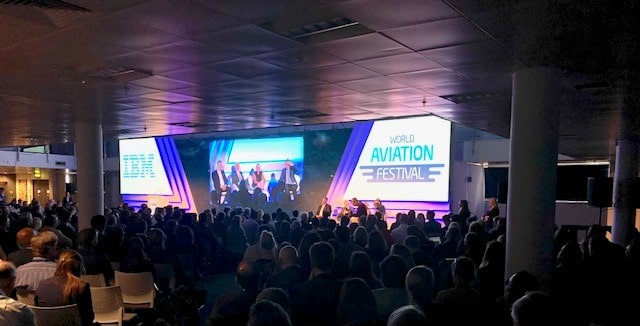At the 2019 World Aviation Festival in London, leaders in the airline industry gathered to exchange best practices and emerging trends. Among these was the concept of implementing dynamic offer generation to further optimize airlines’ revenue. In order to power dynamic offers, an airline must develop the ability to not only set but also display continuous pricing that enables airlines’ flight prices to be set based on a demand curve, as opposed to pre-defined fare “steps”.

Joanna Geraghty, CEO of JetBlue, spoke on dynamic offer generation during the World Aviation Festival panel discussion on finding different revenue streams within airlines.
While dynamic offer generation sounds fantastic from a revenue management perspective, there remains a question as to how airlines will ensure that these real-time fares are being consistently updated wherever consumers are engaging with their brand. Continuous pricing requires AI and real-time information to generate prices that are optimized for the market at any given time. However, airlines also need a way to then market these fares.

We’ve seen similar high-level technical pursuits in the airline industry before (ahem, personalization). An ingenious concept in theory, but difficult to execute technically, and deemed nearly impossible by regulations (GDPR). Continuous pricing seems to follow the same arc: slick concept, difficult to execute technically, and made more difficult by regulations – in this case, USDOT accuracy and availability constraints.
The trend of personalization consisted of a lot of talk about why to do it and even some talk about how to do it, but never an explicit way to make it a widely adopted concept in the airline industry. That’s because there was rarely talk about the technical infrastructure needed to accomplish something as intimate as personalization.
This is where EveryMundo steps in. The EveryMundo Fare Marketing Platform does all of the heavy lifting to continuously update fares in real time so that airlines are able to immediately see the benefits from their continuous pricing implementation, without having to worry about USDOT compliance or creating fare marketing infrastructure in-house. EveryMundo real-time fare display technology is powered by fares that are shown to users in the IBE and other real-time fare feeds, meaning that no matter where fares are continuously updated, EveryMundo consumes that data and instantly broadcasts new fares.
With EveryMundo fare marketing technology airlines and big pricing vendors (ATPCO, Farelogix, Global Distribution Systems, etc.) are able to focus their efforts on building their continuous pricing frameworks with assurance that the marketing and merchandising component already exists to power their goal of optimized pricing.
